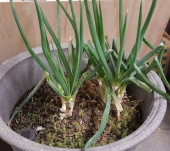
 2
2





 3
3




 3
3




Invasive plants are Earth's way of insisting we notice her medicines. Stephen Herrod Buhner
Everyone learns what works by learning what doesn't work. Stephen Herrod Buhner
 1
1




"The world is changed by your example, not your opinion." ~ Paulo Coelho
 1
1








Cathy James wrote:But I learned the hard way that starting plants to grow large enough to transplant outdoors (tomatoes, for example) need much more light if they are to grow strong stems that can resist wind, avoid being leggy.
 2
2




Anne Miller wrote:
I have always had the best luck with just planting my seeds outside after the danger of frost in the spring.





 1
1












I don't own the plants, they own me.

|
So then I told Joseph Stalin to piss off! Remember that tiny ad?
The new purple deck of permaculture playing cards
https://www.kickstarter.com/projects/paulwheaton/garden-cards
|






